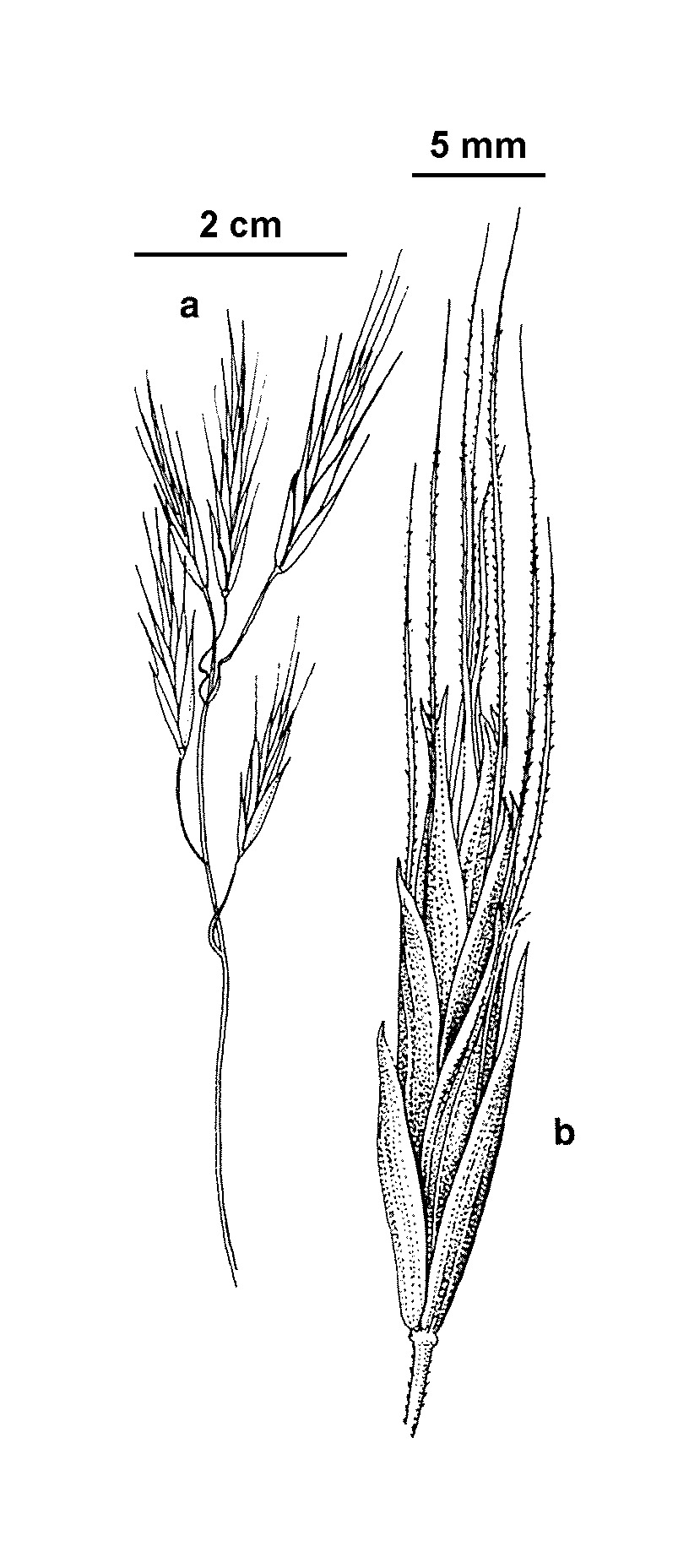Bromus arenarius
Labill. Sand BromeFew-leaved annual, culms erect or procumbent, to 30 cm high (rarely more). Leaves with copious, soft, spreading hairs; blade to 12 cm long and 3.5 mm wide; ligule glabrous or with a few marginal hairs, deeply laciniate, 0.5–1.5 mm long. Inflorescence a loose, open panicle with drooping branches, usually with only 2–7 spikelets. Spikelets 4–13-flowered, lanceolate, 12–30 mm long (excluding awns); lower glume 3-nerved, 6–8(–9) mm long, upper glume 5–7-nerved, 9–12 mm long, both scaberulous to shortly hispid or pilose; lemma 11–16 mm long, with an apical notch 2–3 mm long, 7-nerved, indumentum as for glumes; awn about as long as lemma. Abscission scar on callus ovate to rounded-triangular. Flowers Jul.–Oct.
LoM, MuM, Wim, GleP, Brid, VVP, VRiv, MSB, RobP, MuF, GipP, Gold, CVU, GGr, EGU, HNF. All mainland States except NT. New Zealand, naturalised in California and some northern American States. Rather rare in Victoria, occurring on sand and claypan soils in the Wimmera and Mallee and on shallow soils over rock in rain-shadow areas of East Gippsland (e.g. Suggan Buggan), with pre-1950 records from Castlemaine and Echuca areas. Apparently now absent through many parts of its former range with recent records being confined to the north-west (e.g. Natimuk, Hattah, Chinkapook, Lake Wallawalla areas).
The status of this species as native or introduced is uncertain. It is sometimes regarded as an introduction, despite the type collection (from Cape Leeuwin, Western Australia) having been made in 1792, long before the first European settlement in that State. It is regarded here as native in Australia and naturalised in New Zealand and North America. It is the only native Bromus species.
Some Australian specimens have in the past been referred to Bromus japonicus Thunb., but this superficially similar Eurasian species has smaller spikelets (upper glumes no longer than 8 mm, and lemmas to 9 mm). The abscission scar on the callus is circular to oblate. It has been collected in Tamworth, NSW, but is otherwise unknown in Australia.
Walsh, N.G. (1994). Poaceae. In: Walsh, N.G.; Entwisle, T.J., Flora of Victoria Vol. 2, Ferns and Allied Plants, Conifers and Monocotyledons, pp. 356–627. Inkata Press, Melbourne.
 Spinning
Spinning




